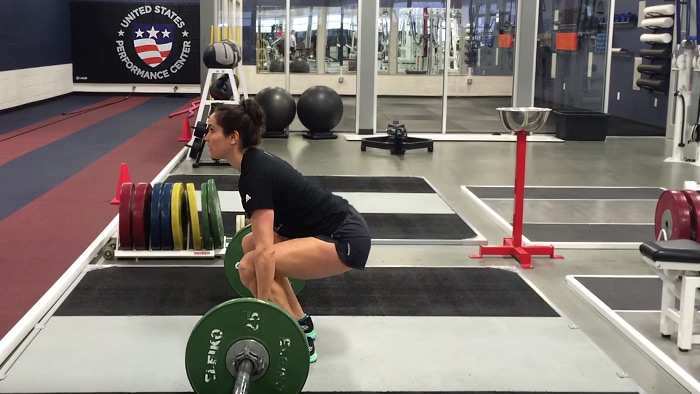In our last article, we discussed the benefits of strength and power training in a well-designed training program. Strength and power training enhances running economy, corrects imbalances, prevents injury, and increases resting metabolic rate. Furthermore, numerous studies have shown that strength training improves time-trial performance and VO2max in competitive endurance athletes1.
Addressing Your Limiters
Before beginning a strength program, it is important to address areas that might limit performance. Limitations can arise from repetitive training such as swimming, biking, and running. Endurance athletes spend so much time performing the same movement patterns over and over again. The imbalances that come up can lead to discrepancies between limbs, produce injuries, and can potentially hinder performance.
Cyclists typically have very strong quadriceps, yet weak hamstrings and hip stabilizers. Runners tend to have strong quads and calves, but disproportional glutes and shin muscles. Triathletes often have dysfunctional hips, knees, and ankles. These imbalances lead to discrepancies between limbs, produce injuries, and can potentially hinder performance. Common areas for triathletes include dysfunctional hips, knees, and ankles. In order to reduce the limiters, it is important to warm up well before exercising, stretch well afterward, and take advantage of soft tissue modalities for recovery.
The combination of these three when used regularly can do wonders for performance by minimizing limiters. Another method of reducing limitations is by incorporating mobility and stability exercises. These exercises can help improve the quality and efficiency of movement within a joint or help it to remain steady when the joint is under stress, both of which are very important for triathletes.
Exercise Selection
One of the most important parts of a well designed strength program is exercise selection. Without the right selection, the end result may not be there, as well as a large waste of time. Endurance athletes should prioritize multi-joint exercises (such as a squat), exercises capable of heavy loads (such as a deadlift), and exercises that focus on power development (such as a box jump). Stick to basic lifts for success.
Establish Proper Form
Once these simple aspects are incorporated, it is important to develop a baseline of strength and establish proper form. To do this, perform the exercises that will make up your strength program with a focus on technique and a lighter weight. If you are having issues with a particular exercise, go slower, and improve your control over the weight. When you feel like you can control the weight well, begin to add resistance.
7 Key Strength Exercises for Endurance Athletes
The following text and videos will show you how to perform seven exercises that you can use for your strength routine. Remember, warm up well before starting and don’t forget to stretch well afterwards.
Deadlift
Start with the barbell on the floor. Keep your chest up, hips back, and pull the bar until you have locked your hips and knees. Make sure your lower back remains neutral.
Box Jump
Jump on a box and land as gently as possible. Step down and repeat.
Romanian Deadlift
Grip the bar shoulder width, pinch your shoulder blades together and keep your chest up. Lower the bar toward the top of your feet by bending at the hips while keeping the bar as close to your body as possible.
Squat
Rest a barbell on your upper back. Squat down until your hips are below your knees. Focus on going as deep as possible to work the posterior chain. Push back on your heels as you perform each rep.
Bench Press
Lie on a bench with your feet flat on the floor. Lower the bar to your mid-chest. Press it back up until your arms are fully extended.
Pull Up
With hands shoulder width apart, begin by hanging from a bar with arms fully extended. Pull yourself up toward the bar with your chin clearing the bar. Lower yourself slowly and repeat.
Push Press
Grasp the barbell from the rack. Start with the barbell chest high. Dip your body while bending your knees. Drive the barbell over the shoulders extending the arms overhead while explosively driving upward with your legs. Bring the barbell back to the chest.
After managing weaknesses, establishing a solid foundation, and learning proper form, greater loading can begin. For part two of this series, we will discuss how to move into the heavy lifting phase once you have the movements down and a strength base established.
Read part 2 of this series to learn how to schedule your strength training session to improve your performance.
References
- Smith, J. D., & Johnson, A. B. (2014). The effects of high-intensity interval training on cardiovascular health: A systematic review. Journal of Exercise Science, 6(2), 112-125. https://pubmed.ncbi.nlm.nih.gov/24532151/



